The Moto G (2015) Review
by Brandon Chester on August 19, 2015 8:00 AM EST- Posted in
- Smartphones
- Mobile
Display
Since a smartphone is primarily a large display that you interact with, it's important that manufacturers prioritize including a high quality display. As smartphones advanced we first saw increases to display resolution to improve sharpness, as well as a shift from TN displays to VA or IPS panels in order to improve viewing angle. With specs like resolution reaching a point where there isn't much more improvement to be made, manufacturers have moved on to improving display accuracy. While some have begun to focus on the color accuracy of their mid-range devices, others have not. To evaluate the various aspects of a display we use X-Rite's i1Pro 2 spectrophotometer along with their i1Display Pro colorimeter, and SpectraCal's CalMAN 5 software.
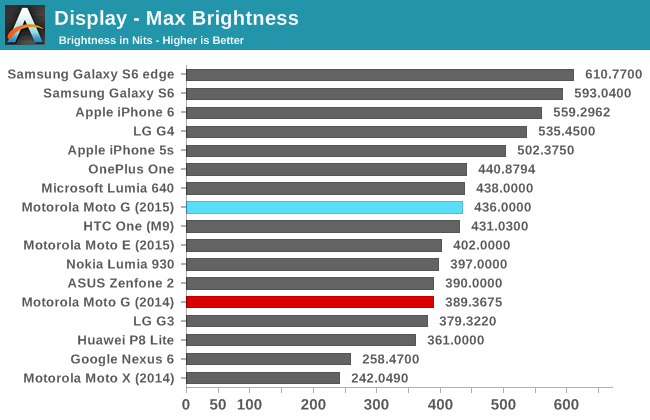
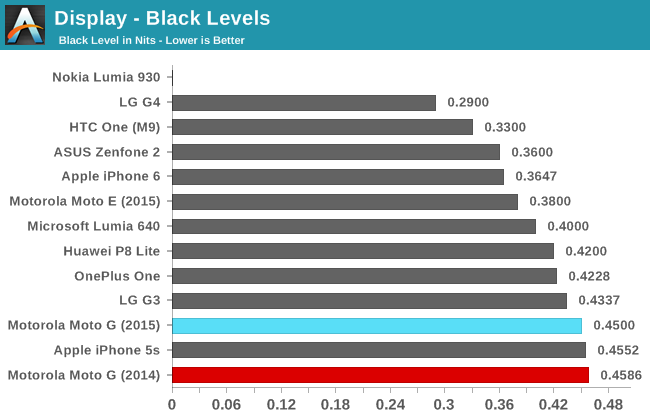
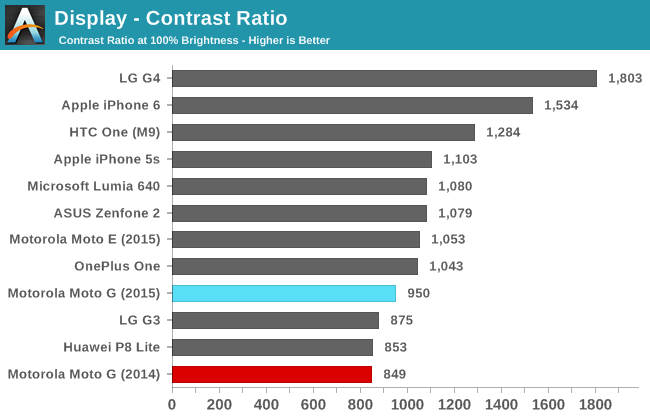
The Moto G has a good peak brightness, although the black level is higher than most recent devices, including the 2015 Moto E. What makes the Moto G somewhat difficult to use outdoors despite its brightness is the fact that the display seems fairly reflective, and the capacitive touch sensors show up very easily in the light which creates a pattern that obscures the content on the LCD.
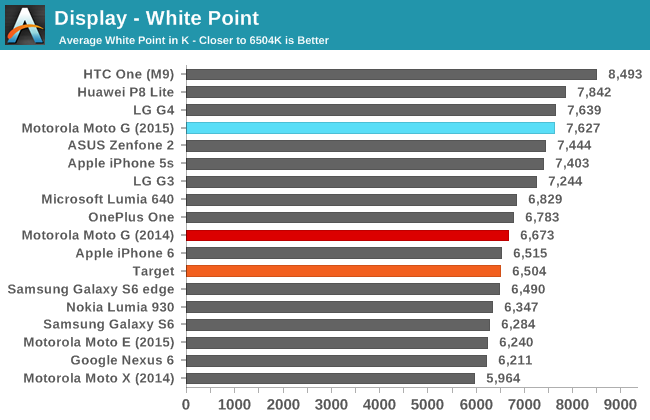
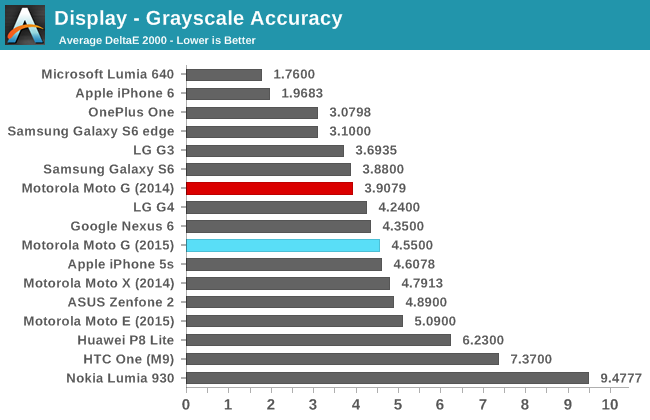
The Moto G's gamma is very accurate, but the overall greyscale accuracy is let down by the panel's blue shift. The white point average is 7627K, which is noticeably more blue than the desired average of 6504K. From 20% grey onward one can notice the blue tint in grey shades, and in the end the average error is a somewhat disappointing 4.5532, with the error in the lightest shades being even higher at around six. In all of these aspects, the 2015 Moto G's display actually regresses significantly from the 2014 model. It's not clear if this is just model variance, or if this is applicable to all versions, but in any case it is disappointing.
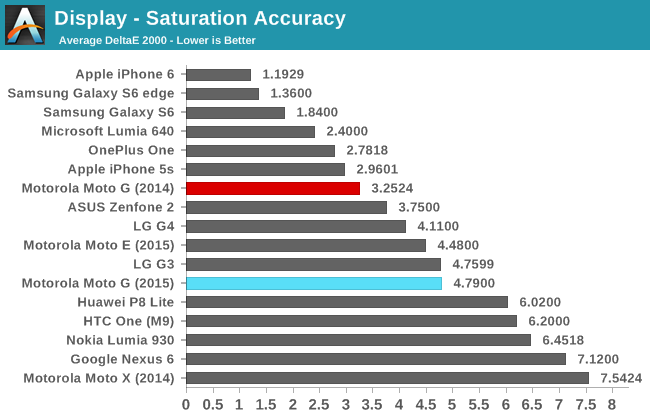
In our saturation sweep test we see that blue has a degree of over-saturation at all points, with saturations past 60% overshooting significantly. Red demonstrates some saturation compression, and there's general inaccuracy in yellow, cyan, and most of all, magenta. This is another situation where the 2015 Moto G's display regresses compared to the 2014 edition, and it's to a much more significant degree than the greyscale test, with the older 2014 Moto G having achieved a result that rivals high end smartphones.
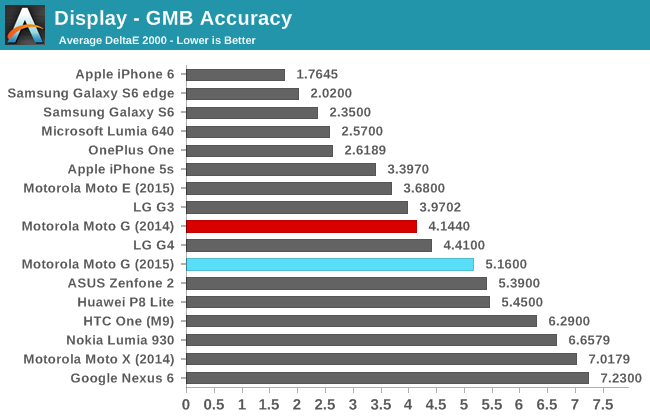
Due to the inaccuracy in the greyscale and in rendering primary and secondary colors there's not much hope for accurate reproduction of color mixtures on the 2015 Moto G's display. Shades of green tend to have a decent level of accuracy, but most other colors and shades of grey suffer from over-saturation or under-saturation depending on what primary/secondary color they most relate to, and are just generally inaccurate. When using the Moto G this was fairly evident to me throughout the UI, particularly on icons that I see very often such as those for Google's own apps.
While I don't know how consistent the calibration across Motorola's devices is, based on the results measured for our samples of the 2014 and 2015 Moto G it's clear that the display of the 2015 model regresses in most respects. Peak brightness increases substantially which is appreciated, and maintaining black level has boosted contrast. Unfortunately, the display is far too blue, and this causes significant greyscale errors despite the display's relatively straight and accurate gamma. The inaccuracies in rendering primary and secondary colors combined with the greyscale errors means that there aren't many shades the display actually does render accurately outside of some that primarily consist of a green component. Ultimately I'm let down by the Moto G's display, because this year's model saw no upgrade to resolution, and I had hoped that there would be some improvement, or at the very least no reduction in the display accuracy.


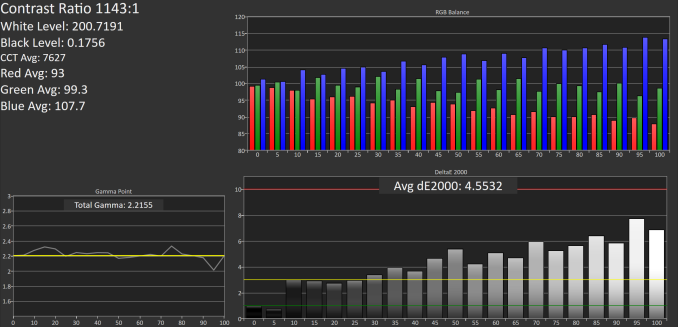

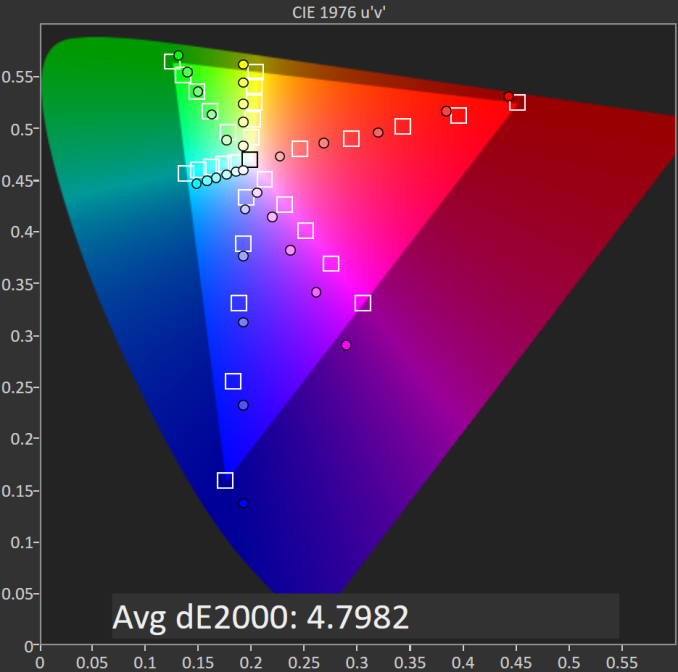










90 Comments
View All Comments
christofftofferson - Wednesday, August 19, 2015 - link
How come the Nexus 6 doesn't use OIS for video?Technical limitation?
Brandon Chester - Wednesday, August 19, 2015 - link
Using OIS for video introduces its own visual problems with the OIS having to reset once it reaches its maximum angle of accommodation. It's arguably worse looking than just using EIS because it happens so quickly that it almost looks like a stutter, and is quite jarring.christofftofferson - Thursday, August 20, 2015 - link
Ah. I see.Thanks for the response and great review
bug77 - Wednesday, August 19, 2015 - link
Just as a note, Motorola has decided to go with the 32bit version of Android for this iteration of Moto G. Rumour has it this is because they wanted to be more memory efficient on the 1GB model, but that's just speculation.hans_ober - Wednesday, August 19, 2015 - link
It's probably that. They needed to take care of the 1GB model; and didn't want to develop a separate software stack for the 2GB 64bit.tipoo - Wednesday, August 19, 2015 - link
Yeah that's likely the reason, the old G is pretty bad with 1GB on 32 bit as it is, 64 bit would likely make it significantly worse.Not creating a 64 bit build for the 2GB is probably just laziness though.
hans_ober - Wednesday, August 19, 2015 - link
How is the audio output? Cross-talk, can it drive headphones? Camera speed?kspirit - Wednesday, August 19, 2015 - link
The important questions!Shadowmaster625 - Wednesday, August 19, 2015 - link
These phones are pointless. The market is already saturated with hardware that is better than this. You can buy a LG G2 for just over $100 and it blows away this joke in every conceivable category.T1beriu - Wednesday, August 19, 2015 - link
Sorry, but your comment is pointless unless you point us towards that "just over $100 G2" that you're talking about.